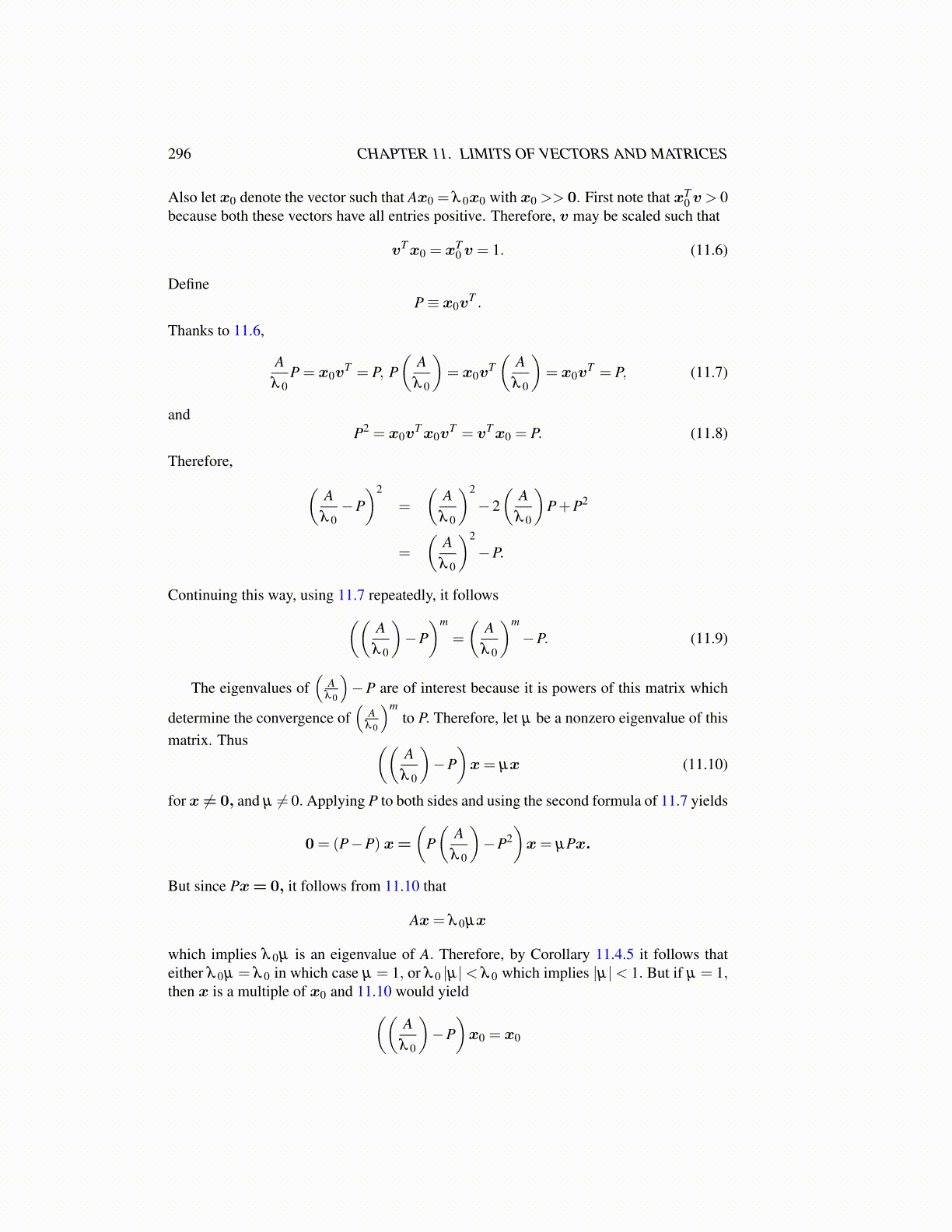
296 CHAPTER 11. LIMITS OF VECTORS AND MATRICES
Also let x0 denote the vector such that Ax0 = λ 0x0 with x0 >> 0. First note that xT0 v > 0
because both these vectors have all entries positive. Therefore, v may be scaled such that
vTx0 = xT0 v = 1. (11.6)
DefineP≡ x0v
T .
Thanks to 11.6,
Aλ 0
P = x0vT = P, P
(Aλ 0
)= x0v
T(
Aλ 0
)= x0v
T = P, (11.7)
andP2 = x0v
Tx0vT = vTx0 = P. (11.8)
Therefore, (Aλ 0−P)2
=
(Aλ 0
)2
−2(
Aλ 0
)P+P2
=
(Aλ 0
)2
−P.
Continuing this way, using 11.7 repeatedly, it follows((Aλ 0
)−P)m
=
(Aλ 0
)m
−P. (11.9)
The eigenvalues of(
Aλ 0
)−P are of interest because it is powers of this matrix which
determine the convergence of(
Aλ 0
)mto P. Therefore, let µ be a nonzero eigenvalue of this
matrix. Thus ((Aλ 0
)−P)x= µx (11.10)
for x ̸= 0, and µ ̸= 0. Applying P to both sides and using the second formula of 11.7 yields
0= (P−P) x=
(P(
Aλ 0
)−P2
)x= µPx.
But since Px= 0, it follows from 11.10 that
Ax= λ 0µx
which implies λ 0µ is an eigenvalue of A. Therefore, by Corollary 11.4.5 it follows thateither λ 0µ = λ 0 in which case µ = 1, or λ 0 |µ|< λ 0 which implies |µ|< 1. But if µ = 1,then x is a multiple of x0 and 11.10 would yield((
Aλ 0
)−P)x0 = x0